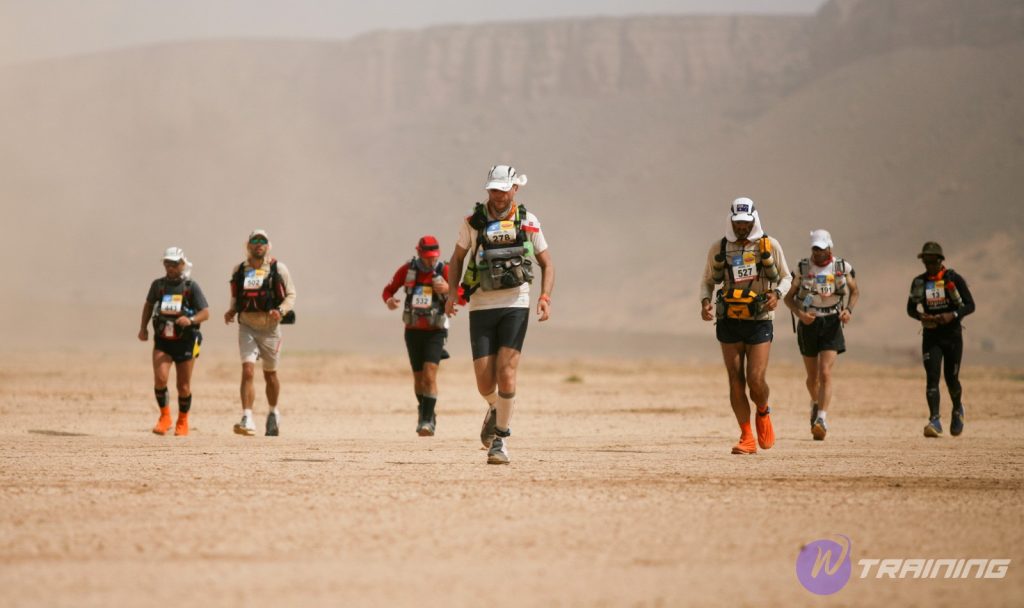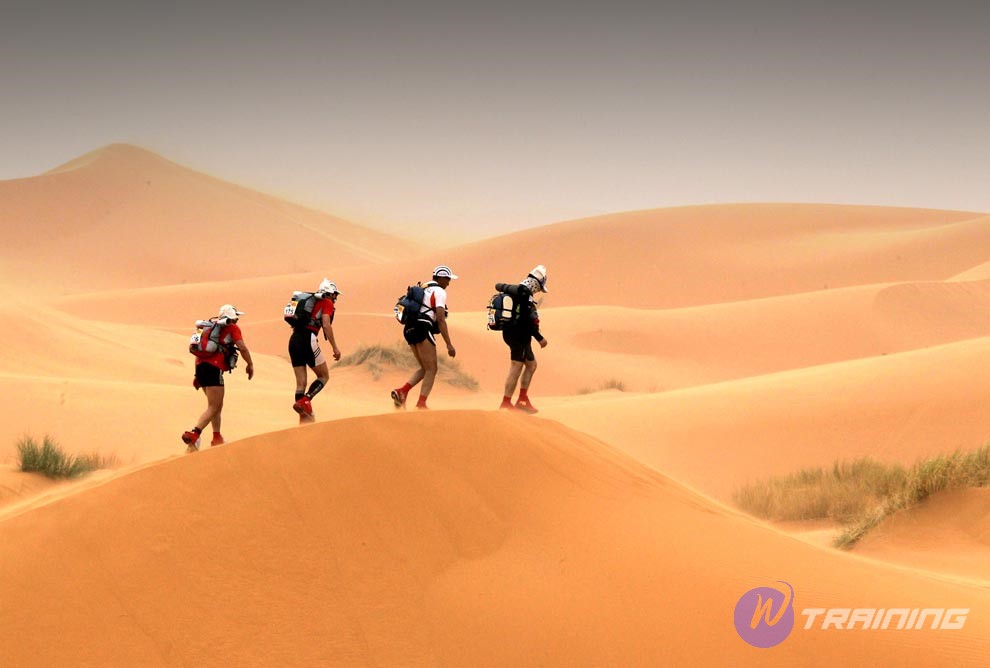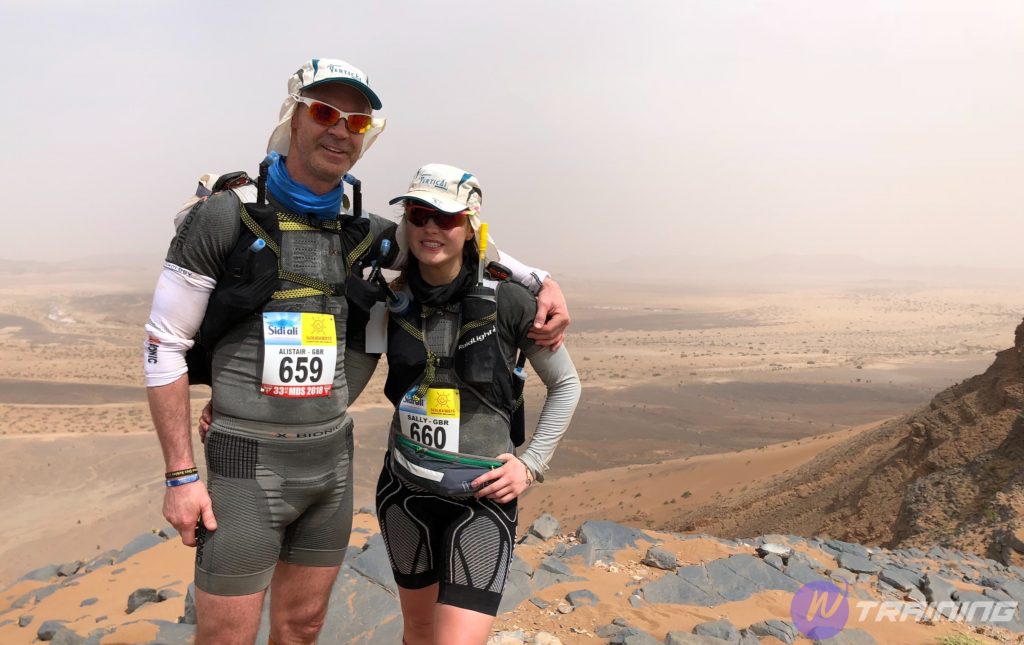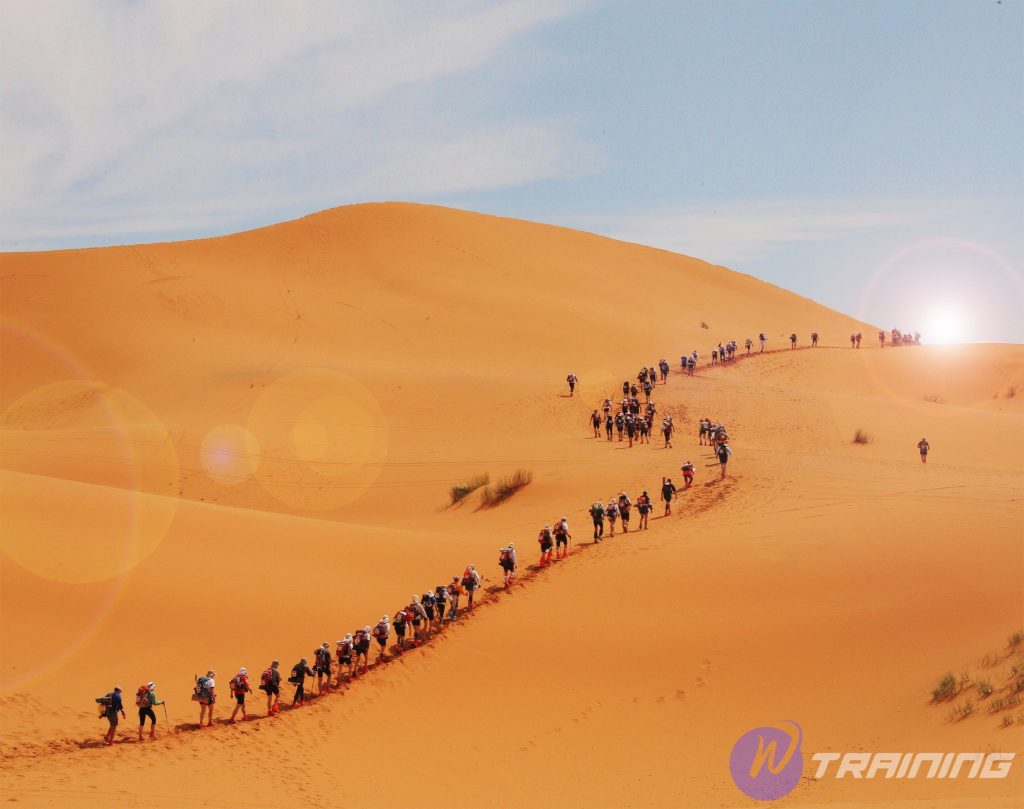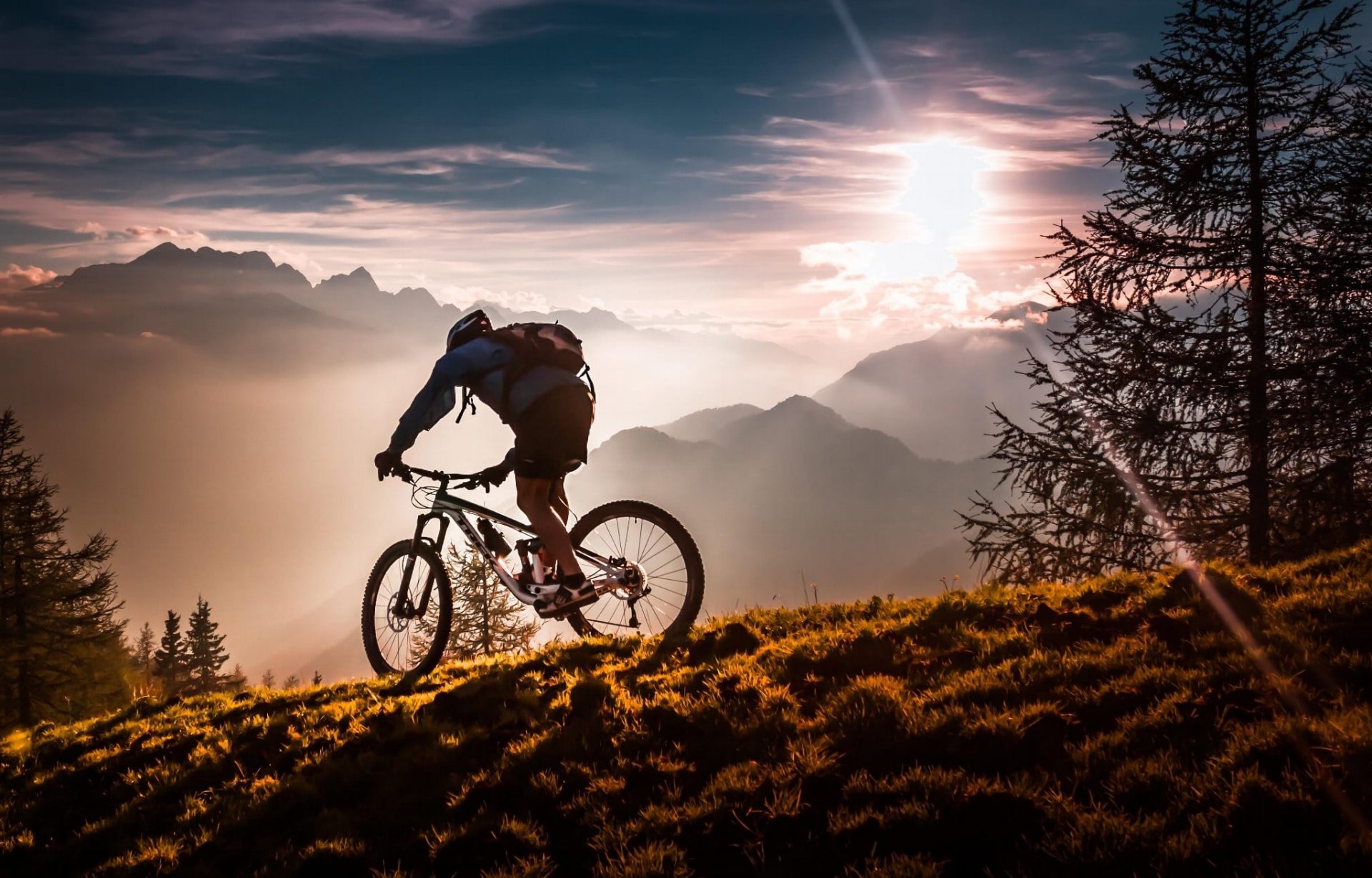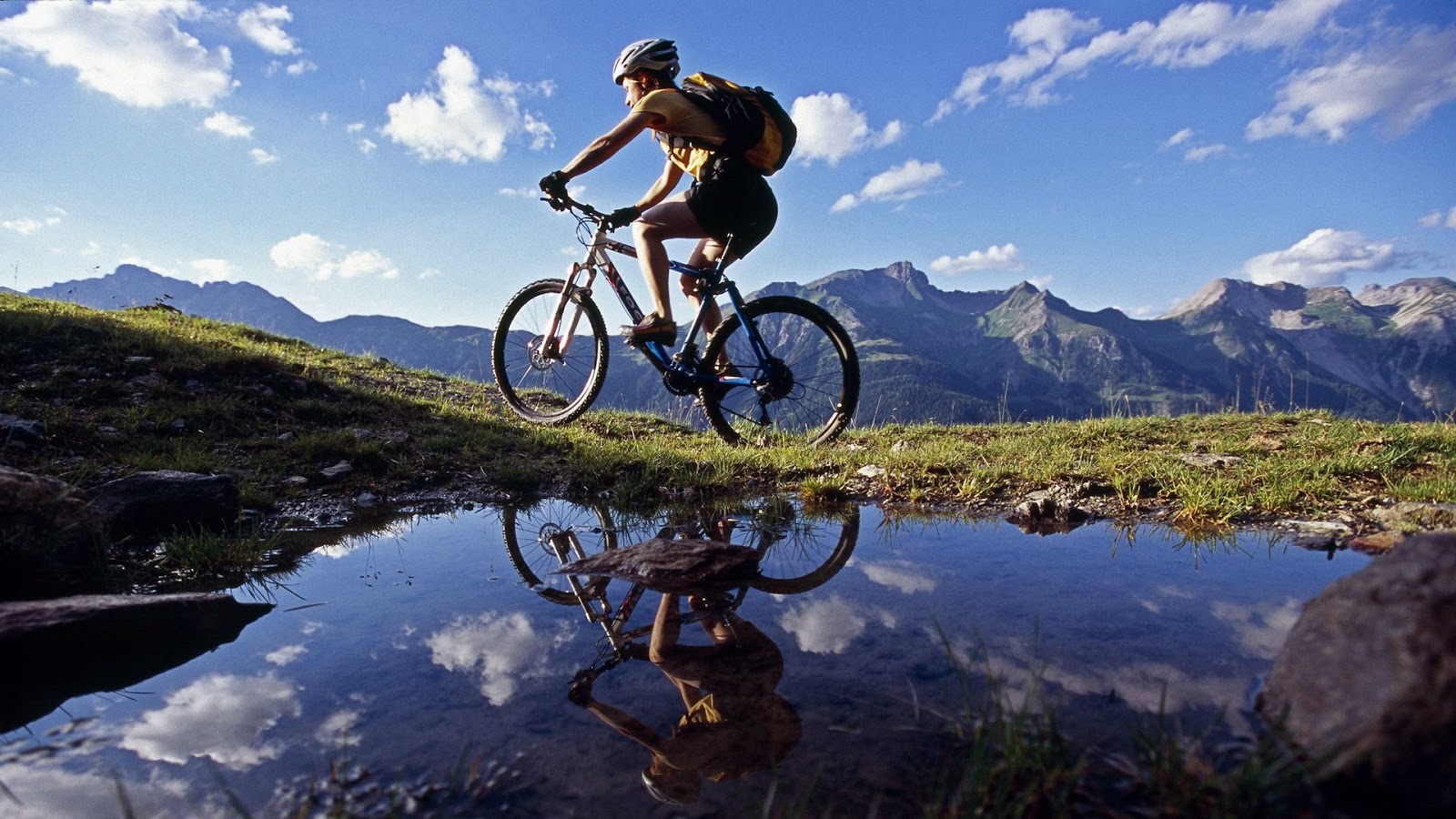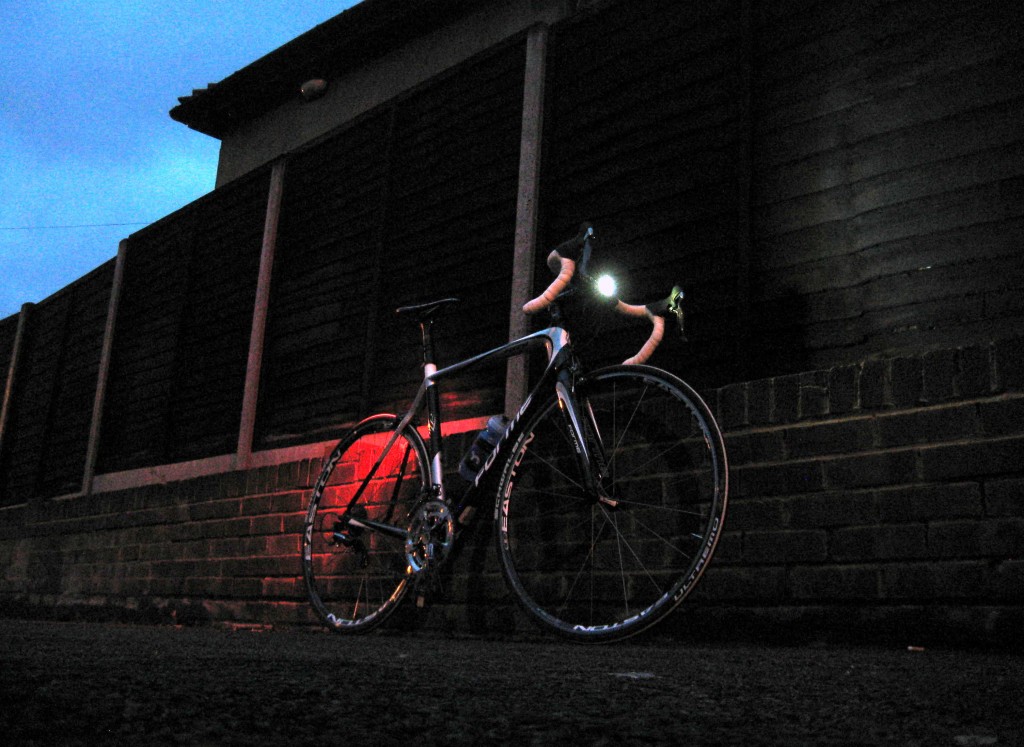The “Marathon des Sables” or “Marathon on Sand” is the most difficult race on the planet, lasting seven days and covering a total distance of 254 kilometers through the vast sandy sea of the Sahara desert in southern Morocco, Africa.
An overview of Marathon des Sables
1. An extraordinary race
What kind of person could you become if you pushed yourself to your limits? What could you possibly do? Where could you go? The Marathon des Sables is legendary – a truly grueling multi-stage adventure through one of the world’s most hostile environments, the Sahara Desert. It is undeniably the World’s Toughest Footrace. Physically, it is six days’ running over 250 km (156 miles) across endless dunes, rocky jebels and white-hot salt plains, carrying what you need to survive on your back. Mentally, it is the ultimate challenge – an experience like no other in the world.
2. What to face
The scorching sun. Joining this race also entails accepting the willingness to face the ever-present dangers. Temperatures can sometimes reach 60oC at noon, putting human endurance to the test.
The sandlots of it. These will be your constant companions, along with 1,000 other runners from around the world, spanning cultures and physical abilities but united by a desire for adventure and to stand out from the crowd.
It will be difficult. The soles of your feet will swell. They’re going to break. When you cross the world’s largest hot desert, they can bleed. The Fourth Day will take you from the Saharan morning into dusk, darkness, and beyond as you run more than 80 kilometers (52 miles) in one continuous stage. But you will find the strength to continue on like those who have gone before you, to the exhilaration and joy of the finish line.
3. Marathon des Sables – At a glance
- 250+ km (156 miles)
- Six stages over seven days
- A long stage of 80+ km (52+ miles)
- Self-sufficient, but with water rations and communal goats’ hair Berber tents supplied and pitched each night
- Temperatures of more than 50°C
- Athletes have to equip themselves with utensils, food … for the entire seven-day journey in the desert. The organizers only provide water and tents at the end of each stage.
- Historically, the longest single track was 91km in 2009
- Despite this harshness, the tournament is attracting more and more attendees, although each participant has to pay a fee of $ 5,000.
About marathon running gear read: Marathon Clothing Ideas: What is Essential For Training?
History
One man. Twelve days in the desert. His insight. The MdS’s status as an ultra legend did not just ‘happen.’ It arose from one man’s vision of a race that would inspire others to reach their full potential while leaving no trace on the environment. This would benefit the locals and the communities along its path.
That man was a 28-year-old French man called Patrick Bauer. And the story begins in 1984, when he set out on an epic walk with all he needed to be self-sufficient – covering 200 miles, in 12 days, across the Sahara desert.
Patrick returned with the desire to provide a similar experience for others, and the first ‘Marathon of the Sands’ took place in 1986 with only 23 competitors. After three decades, MdS attracts an international field of 1,000 runners, 200 journalists, and a 400-plus support management team.
Race – and personal – records are set and broken, though not only by humans. In 2019, ‘Cactus’ the dog (real name, Diggedy) joined on the third stage and traveled 192 km with the competitors. He was returned to his owner later – with his medal, of course.
In 2007, two athletes died along the way from exhaustion. In 1994, Italian police officer Mauro Prosperi got lost in a sandstorm and had to roam the desert for more than nine days. To survive, Prosperi had to drink her urine and pick up dead bats to eat. When she was saved, Prosperi lost 13 kg.
How to enter Marathon des Sables
1. Book in advance
The MdS is held once a year, usually at the end of March or the beginning of April. The good news is… Each event has more than 500 places reserved for UK and Irish entries. The bad news is that Because of the high level of interest in those locations, they usually sell out well in advance. It’s possible that you’ll have to wait. However, there is a silver lining: you will have more time to train and raise funds for your chosen charity.
2. Check charity places
Some of the UK & Ireland allocation is reserved for charities, which may have a place even if we don’t.
3. Teams
Why not enter as a team if you know two other people who are as daring as you? You’ll have three times the fun and raise three times the money. Team members pay a slightly higher registration fee, and your ranking as a team is recorded.
4. To complete
To compete in the Marathon des Sables you must:
- Accept the rules, which govern the race.
- Meet all deadlines for payments.
- Meet all deadlines for completion of registration forms (an online form must be completed after registration).
- Keep your contact details up to date.
- Provide a sealed letter addressed to the Medical Director if you are undergoing long-term treatment for any chronic disease.
- Provide an ECG and medical certificate signed by a doctor. This must be presented the day before the start of the race.
- Take out insurance that will (as a minimum) cover you for cancellation in case of illness or injury before the race.
What to expect
1. Mental fitness
Adaptability. Pay attention. Fortitude. The pressure will feel intense amid the glare of the desert landscape, so your mind will need to be just as strong as your body.
Mentally, you must prepare as much as possible for this difficult but exhilarating challenge. Work on your mindset: what will motivate you? Devote at least half of your time and effort to this critical area.
2. Conditions
It will be hot, to state the obvious. It’s extremely hot. In the Sahara, midday temperatures can reach 120°F / 50°C. So you’ll need something to wear on your head. Your feet, on the other hand, are just as important, if not more so. You’ll be running or walking on uneven, rocky, and stony terrain, with dunes covering up to a fifth of the distance.
3. Equipment
Forget about fashion; it will not help you here. You must wear appropriate footwear. The extreme heat, distance, and constant friction will put your shoes to the test, so pick them carefully, making sure the size will accommodate any swelling as the temperature rises. And put them through their paces while wearing your clothes, rucksack (which must fit comfortably), and the rest of your gear.
4. Food & drink
You will carry, prepare and eat your food throughout the race. Be ready. There are no handy shops to get extra supplies en route.
The solution? Concentrated / rehydratable food, which can be made quickly and without fuss. Advice on how and where to source the best provisions is included with your registration details. Get a head start by visiting your local expert camping shop, contacting a previous entrant and reading the numerous Facebook posts on this subject on our runner’s group page. Don’t forget to include some small snacks as a tasty treat to offset the inevitable tedium of expedition-type food and keep your spirits high.
Other questions about Marathon des Sables
1. Lost?
You’ll be running alongside over 900 other people, so you’re unlikely to get lost. The route is clearly marked, and course marshals are stationed at key points. In addition, you will be given a tracker, so that if you veer off course, we will receive an alert and come down to get you back on track. On the way into camp, you will also be given a detailed road book with a detailed description of each day’s route.
2. Marking?
The course is marked at 500-meter intervals by people (subject to terrain). Luminous markers should be used during the night section of the non-stop stage, which is approximately 80 kilometers long. However, you may need to take compass bearings, especially if marking out is impossible or visibility is compromised in the dunes.
The roadbook will tell you where and how far to take these compass bearings. Are you still in the dark? Wait for others to arrive and solve the problem together. In all cases, pay close attention to the course director’s briefing at the beginning of each stage.
3. Creepy crawlies
Finally, a word about our six-legged, eight-legged and no-legged friends.
Morocco has snakes, but competitors rarely see them. Insects in the region are mostly harmless, and mosquitoes are uncommon. The basic rule is to ensure that no creepy crawlies have sought refuge in your shoes overnight, and you will develop a routine to ensure that you do not come into contact with any unwanted visitors.
The Marathon des Sables is a legend. A challenge. An adventure. But it is also – at a practical level – about management. A planned race is a successful one, but you will also be supported by a fully qualified and experienced medical team during the race. Don’t worry! Just try your best.
Read more:
Trail Running Shoes vs Road Running Shoes, What Is Difference?
Running Cadence: Definition, Calculator & Ways To Improve
